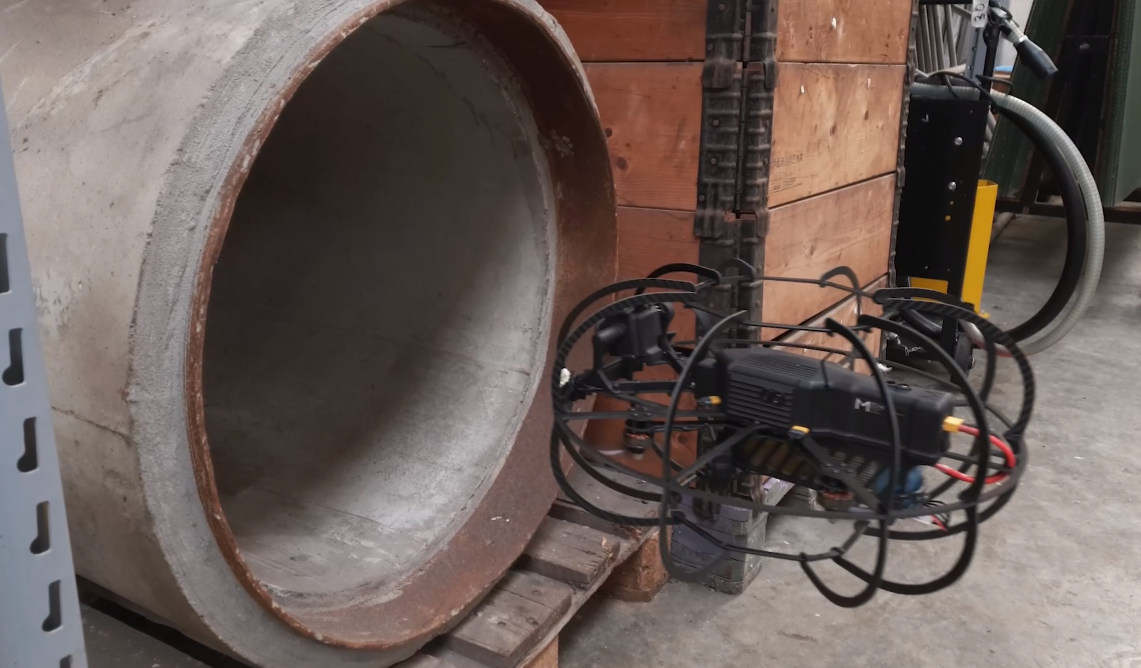/reboot/media/95268e66-9e53-11ed-b306-0242ac14000b/80f919f6-86d5-11ef-8b89-0242ac120013/1-1-portrait-male-engineer-working-field-engineers-day-celebration.jpg)
Top 5 confined space inspection challenges
Confined‑space inspections are essential operations for ensuring the safety and maintenance of infrastructures such as pipelines, reservoirs, sewers and tunnels. However, these environments are often difficult to access, dangerous for human operators, and pose specific challenges in terms of safety, efficiency and visibility. Thanks to technological advances, inspection robots like Multinnov's Roview2 and Stereo2 offer effective solutions to overcome these challenges. This article highlights the five main obstacles encountered when inspecting in confined spaces, and how these robots help solve them.
Limited and difficult access
Confined spaces often feature restricted access, such as narrow pipes, tanks or hard‑to‑reach tunnels. In many cases, sending human operators requires complex layouts or the use of special equipment to access these areas, adding to the costs and time involved in carrying out inspections.
The Roview2, a rolling robot designed specifically for inspections in confined environments, is the ideal solution for overcoming these access limitations. Its compact design, weighing just 4 kg, and its ability to operate both on land and in water, mean that it can move easily in tight or difficult‑to‑access environments. What's more, its encoded wheels accurately measure the distance covered, guaranteeing a complete inspection of the area without the need for a human operator in the field.

Risk of contamination or hazardous atmosphere
Atmospheres in confined spaces may contain toxic gases, flammable vapors or other volatile substances hazardous to human health. This type of hazard makes access very difficult for operators, even when equipped with respiratory protection and special suits.
The Stereo2, a small drone designed for confined environments, offers a safe solution to these problems. Equipped with a protective cage, it can come into contact with walls without risking damage, while ensuring accurate inspection. In confined spaces, it can fly and take readings without the aid of a GPS signal, thanks to its optical stabilization and on‑board sensors. What's more, with the option of adding gas sensors and other detection devices, the Stereo2 monitors the atmosphere in real time, ensuring that conditions remain safe throughout the inspection, without exposing a human operator to hazards.
Reduced visibility and difficulty in detecting anomalies
Confined environments are often characterized by very limited visibility. The absence of natural light, and the presence of debris or airborne dust, can make it extremely difficult to detect anomalies such as cracks, leaks or areas of corrosion.
The Roview2 is equipped with a 4K camera that rotates 360° horizontally and 180° vertically, enabling complete visualization of the environment. Combined with powerful LED lighting, this camera guarantees meticulous inspection even in the darkest areas. Live video feedback in high definition (1080p) ensures that operators can monitor every detail in real time and immediately identify potential problems. For its part, the Stereo2 is equipped with a high‑performance lighting system and an indirect lighting mode to cope with dusty conditions, which is particularly useful when suspended particles can interfere with direct visibility.
Physical constraints for workers
Manual inspections in confined spaces can impose significant physical constraints on workers, such as the need to crawl in tight spaces, contort themselves into awkward positions, or remain for long periods in high‑temperature or poorly ventilated environments. This not only increases the risk of musculoskeletal injuries, but also of serious accidents.
Inspection robots like the Roview2 and Stereo2 eliminate these constraints by enabling operators to carry out inspections remotely, without having to physically enter the confined space. The Roview2, with its remote control and obstacle‑clearing capabilities, enables complete coverage of the terrain without direct human intervention. The Stereo2, meanwhile, offers real‑time video stabilization and feedback, enabling operators to monitor the inspection from a secure position. By limiting workers' exposure to physical risks, these robotic solutions increase overall safety while improving inspection efficiency.
Authorization management
Access to confined spaces is regulated by strict laws, particularly with regard to worker safety. Obtaining authorizations to allow operators to enter hazardous areas can be time‑consuming and restrictive, which can delay inspections and increase costs.
With the use of Roview2 and Stereo2 robots, these administrative procedures are considerably simplified. Indeed, these autonomous machines can carry out inspections without the need for human operators in the confined space. This not only ensures compliance with current safety regulations, but also avoids complex formalities for inspection teams. The robots collect all necessary data and produce reports in line with standards such as NF 13508‑2 for sewer inspections, making it easier to comply with regulatory requirements while guaranteeing accurate, reliable results.
How Roview2 and Stereo2 overcome the challenges of confined‑space inspections
Inspections in confined spaces present many challenges which, without the help of appropriate technologies, can jeopardize worker safety and impair inspection quality. Multinnov's Roview2 and Stereo2 robots provide practical solutions to these problems. Thanks to their compact design, ability to operate in extreme conditions and advanced technology, they enable fast, safe and accurate inspections, while minimizing risks and costs.
These robots are more than just an alternative to human inspection: they have become indispensable tools for meeting modern safety and performance requirements in confined environments. With them, companies can now meet these challenges with confidence, while optimizing their inspection operations.
:strip_exif()/reboot/media/95268e66-9e53-11ed-b306-0242ac14000b/7e1d7cf8-a2df-11ed-b843-0242ac14000b/1-1-multinnov-pour-fond-blanc.png)
:strip_exif()/reboot/media/95268e66-9e53-11ed-b306-0242ac14000b/7e1d7cf8-a2df-11ed-b843-0242ac14000b/1-1-multinnov-pour-fond-blanc.png)
/reboot/media/95268e66-9e53-11ed-b306-0242ac14000b/d246b0ac-74d3-11ef-a7b3-0242ac120010/1-1-capture-d-ecran-2024-09-17-105824.png)
/reboot/media/95268e66-9e53-11ed-b306-0242ac14000b/caa8e754-be05-11ef-a823-0242ac120010/1-1-zone-industrielle-francaise.jpg)
/reboot/media/95268e66-9e53-11ed-b306-0242ac14000b/e450df62-9de5-11ef-8deb-0242ac120013/1-1-capture-d-ecran-2024-11-08-103326.png)